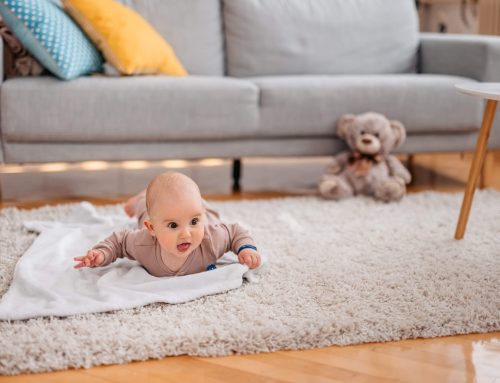
Nine Causes for Uneven Home Heating During Winter
Have you noticed inconsistent home heating this winter? This problem occurs when some rooms feel nice and cozy while others are significantly colder. There may be several reasons behind this comfort conundrum. Explore what could be triggering these temperature imbalances and how to address them.
1. Blocked or Shut Vents
The cause of your problems: Your furnace moves heated air throughout your home via air inlets and outlets called vents. If these are obstructed, the disrupted airflow creates hot and cold spots in your home.
The remedy: Make sure all the vents are open, especially if certain rooms aren’t experiencing enough heat. Then, inspect furniture, rugs and curtains that might be impeding airflow. If a room is too hot, make sure the registers in the other rooms are open and feel like the same amount of air is coming out. If one or more registers is open but not much air is coming out, there could be a problem with a damper or the duct forcing the air to go where it is not needed.
2. Clogged Furnace Filter
The dilemma: Your furnace air filter collects dust, pollen and other airborne contaminants, making your air clean. But a dirty filter obstructs airflow, making your heating system work harder and resulting in uneven heating. If warm air cannot get through the HVAC system easily, rooms farther from the furnace are made colder than you would like.
The remedy: Inspect and change the air filter for a clean one every one to three months, especially in the winter when your heating system works overtime.
3. Inadequate Insulation
The challenge: Poor home insulation lets heat leak out, especially from rooms exposed to outside walls or the attic. This problem causes certain rooms to be harder to heat, even when other areas of the house are comfortable.
The fix: Add more attic insulation to stop heat from seeping out of your home. If your current insulation looks good, you may be able to install more on top of it.
4. Drafty Windows and Doors
The issue: Single-pane windows and old, leaky doors are well-known for letting cold air inside, disturbing the indoor temperature. This problem is most common in older homes, where windows and doors don’t close as tightly as they should.
The solution: Prevent drafts around doors and windows by applying weatherstripping or caulk. Insulated curtains and thermal blinds also block the cold from entering. When these simple fixes aren’t enough to prevent cold spots, think about replacing your windows and exterior doors.
5. Duct Leaks
The problem: Ductwork carries heated air throughout your home. If there’s a breach, warmth can seep out before it can get to your living space.
The remedy: Employ an HVAC specialist to inspect your ductwork for leaks, which can often be sealed with metal tape or mastic sealant. In more extreme cases, duct replacement may be necessary.
6. The Location of Your Thermostat
The problem: Your thermostat controls the heating system for your entire house. If it’s in a breezy or unusually warm location, it may produce inaccurate readings, forcing the system to run at the wrong times and leading to uneven temperatures.
The fix: If your thermostat is installed near a drafty window or heat-generating appliance, think about relocating it. A technician from Environmental Systems Associates can help you move it to a more centralized location so that it is able to more accurately gauge the home’s average temperature. For extra ease, consider a smart thermostat, which permits remote temperature control and customized heating schedules.
7. Your Furnace Is the Wrong Size
The problem: A furnace that’s too small may fail to produce enough heat, resulting in some cold rooms. Conversely, an oversized furnace may switch on and off frequently, resulting in temperature fluctuations and increased wear and tear on your heating system.
The way to fix it: Have a professional assess the furnace size in relation to your home’s area, climate, insulation levels, window orientation and more. If your furnace is mismatched, consider upgrading to the right size for better heating performance and efficiency.
8. Multiple Levels in Your Home
The issue: Heat naturally rises, which means the second floor of your home is often nice and toasty while the first level stays cold.
The solution: Zoning your heating system allows you to control the temperature in different parts of your home using independent thermostats and ductwork dampers. By doing this, you can guide warm air when and where you want it.
9. You Didn’t Schedule Routine HVAC Maintenance
The issue: Like any mechanical equipment, your furnace requires regular tune-ups to operate efficiently. Without routine care, the system may develop issues that reduce efficiency and prevent it from heating evenly.
The solution: Schedule professional maintenance once a year, preferably in the fall before the heating season starts. Regular HVAC maintenance is an easy way to detect and fix problems before they lead to performance issues.
Arrange for Furnace Services Today with Environmental Systems Associates
Uneven heating is a problem. If a quick fix doesn’t do the job, call Environmental Systems Associates to help set things right. Our ACE-certified technicians provide fast, reliable solutions to all your home heating needs backed by a 100% satisfaction guarantee. Don’t let another cold spot get you down— contact Environmental Systems Associates by calling 410-645-0966 today to book furnace services with us.

